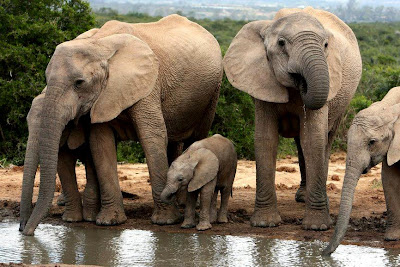Penguins (order Sphenisciformes, family Spheniscidae) are a group of aquatic, flightless birds living almost exclusively in the southern hemisphere, especially in Antarctica. Highly adapted for life in the water, penguins have countershaded dark and white plumage, and their wings have evolved into flippers.
Most penguins feed on krill, fish, squid, and other forms of sealife caught while swimming underwater. They spend about half of their lives on land and half in the oceans.
Although all penguin species are native to the southern hemisphere, they are not found only in cold climates, such as Antarctica. In fact, only a few species of penguin live so far south. Several species are found in the temperate zone, and one species, the Galápagos Penguin, lives near the equator.
 |
| Emperor Penguins |
The largest living species is the Emperor Penguin (Aptenodytes forsteri): on average adults are about 1.1 m (3 ft 7 in) tall and weigh 35 kg (75 lb) or more. The smallest penguin species is the Little Blue Penguin (Eudyptula minor), also known as the Fairy Penguin, which stands around 40 cm tall (16 in) and weighs 1 kg (2.2 lb).
 |
| Fairy Penguins |
Among extant penguins, larger penguins inhabit colder regions, while smaller penguins are generally found in temperate or even tropical climates (see also Bergmann's Rule). Some prehistoric species attained enormous sizes, becoming as tall or as heavy as an adult human.
 |
| Rockhopper Penguins |
These were not restricted to Antarctic regions; on the contrary, subantarctic regions harbored high diversity, and at least one giant penguin occurred in a region not quite 2,000 km south of the equator, in a climate decidedly warmer than today.
 |
| Kairuku Penguin |
Dan Ksepka examines a specimen of Kairuku in a display case at the University of Otago's Geology Museum. Photo by R. Ewan Fordyce.
“It’s almost like someone took an emperor penguin and stretched it out,” says Daniel Ksepka, an avian paleontologist at North Carolina State University who helped to reassemble the fossils. The new species (from the genus Kairuku) is sleeker and more slender than other penguins.
It has lengthy flippers for its size and a long and narrow beak. And at four feet two inches tall, the svelte Kairuku was nearly 12 inches taller than the tallest living penguin today, the emperor penguin.


















































